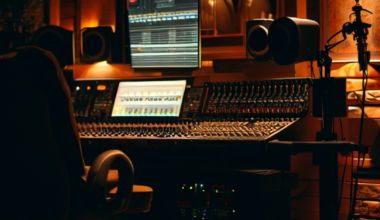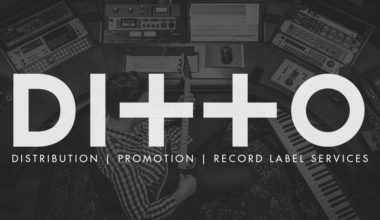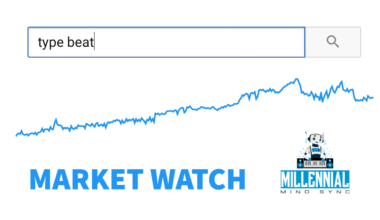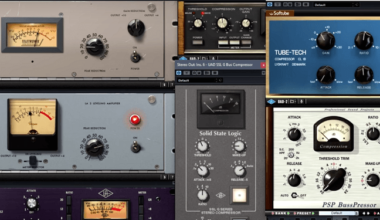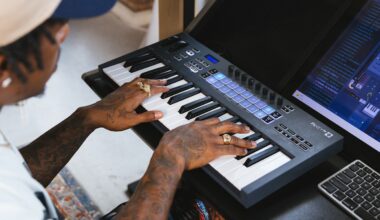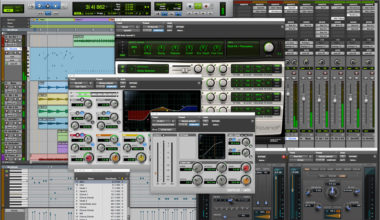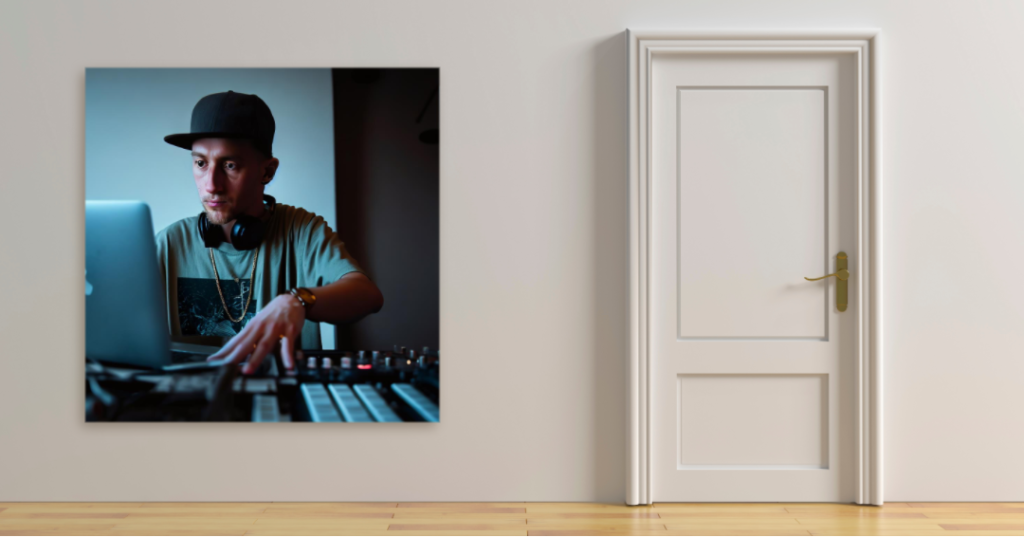
Welcome to the world of beat selling! As you gear up to monetize your craft, pricing strategies are crucial to understand. That’s where this ultimate beat pricing guide comes in.
If you’re a music producer, you’ve probably spent countless hours honing your craft. You’ve mastered the art of creating beats that can make heads bob and hearts race. But now, you’re ready to take the next step. You want to monetize your passion and share your beats with the world.
That’s where platforms like Airbit and Beatstars come in. These online platforms have revolutionized the beat selling industry, providing a marketplace where producers can sell their beats to artists worldwide. But with this opportunity comes a challenge: How do you price your beats effectively?
Pricing your beats can seem like a daunting task. You want to make a profit from your hard work, but you also want to attract artists to your beats. You might be tempted to look at other producers’ prices and follow suit. But the truth is, there’s no one-size-fits-all approach to pricing your beats.
That’s why we’ve created this guide. We want to help you navigate the ins and outs of beat pricing. We’ll explain the different types of beat licenses, provide guidance on how to price each type, and give you tips on how to maximize your earnings.
So, whether you’re a seasoned producer looking to optimize your pricing strategy or a newbie just starting to sell your beats, this guide is for you. Let’s dive in!
Understanding Beat Licensing: The Foundation of the Ultimate Beat Pricing Guide
Before we delve into the nitty-gritty of pricing, it’s crucial to understand the product you’re selling. When a customer buys a beat from you, they’re not buying the beat itself. Instead, they’re buying a license to use that beat. This concept is similar to buying a DVD or a video game. You’re purchasing the right to use the media, not the media itself.
This concept is known as licensing, and it’s the backbone of the beat selling industry. We’ll dive deeper in this beat pricing guide.
What is a License?
In the context of beat selling, a license is a legal agreement between you (the producer) and the customer (the artist). This agreement grants the artist certain rights to use your beat, such as the right to include the beat in a song, to perform the song, or to distribute the song.
However, the license doesn’t transfer ownership of the beat to the artist. As the producer, you retain ownership of the beat. This means you have the right to sell licenses to multiple artists (unless you sell an exclusive license, but we’ll get to that later).
Why is Licensing Important?
Licensing is important for several reasons.
First, it allows you to earn money from your beats without giving up ownership. You can sell multiple licenses for the same beat, creating multiple streams of income from a single product.
Second, licensing protects your rights as a producer. It sets clear boundaries on how the artist can use your beat, helping to prevent disputes and misunderstandings down the line.
Finally, licensing provides flexibility for both you and the artist. You can offer different types of licenses to cater to different artists’ needs and budgets. This can help you attract a wider range of customers and maximize your earnings.
In the next sections of this beat pricing guide, we’ll delve deeper into the different types of beat licenses and how to price them effectively. But remember, understanding licensing is the first step towards successful beat selling.
Leasing Licenses: A Flexible Option for Artists and Producers
Leasing licenses are a popular choice in the beat selling industry. They offer a balance of affordability for artists and recurring revenue for producers. But what exactly are leasing licenses, and what types are there? Let’s break it down in this section of this beat pricing guide.
What is a Leasing License?
A leasing license allows an artist to use your beat for a specific purpose, such as recording a song or performing live. However, unlike an exclusive license, a leasing license is non-exclusive. This means you can sell the same leasing license to multiple artists.
The key advantage of leasing licenses is their flexibility. You can offer different types of leasing licenses to cater to different artists’ needs and budgets. This can help you attract a wider range of customers and maximize your earnings.
Beat Pricing Guide: Types of Leasing Licenses
Leasing licenses are generally divided into four types:
- MP3 License: This is the most basic and affordable type of leasing license. It grants the artist a limited number of plays and streams and comes with an MP3 version of the beat. This license is perfect for emerging artists who are releasing their first single or mixtape and have a limited budget. The price for an MP3 license can range from $20 to $50.
- WAV License: A step up from the MP3 license, the WAV license includes a WAV and an MP3 file of the beat. The WAV file offers higher audio quality, which can enhance the final song. This license also allows for more sales, streams, and plays than the MP3 license and may permit limited radio play and live performances. The price for a WAV license can range from $50 to $100.
- Track Out License: This license provides the track outs or stems of the beat, allowing for greater customization. With this license, the artist can adjust individual elements of the beat to better fit their song. This license also includes the MP3 and WAV files. The price for a Track Out license can range from $100 to $200.
- Unlimited Track Out License: This is the most comprehensive type of leasing license. It offers unlimited plays, sales, streams, and more. Despite its extensive usage rights, it’s still non-exclusive, meaning it can be sold to multiple artists. The price for an Unlimited Track Out license can range from $200 to $500.
Remember, these price ranges are just suggestions. The right price for your beats depends on various factors, including the quality of your beats, your reputation as a producer, and the market demand. It’s important to research the market and understand your target customers before setting your prices.
Exclusive Licenses: The Premium Option for Serious Artists
While leasing licenses offer flexibility and affordability, there comes a time in an artist’s career when they need something more. They need a beat that they can call their own, a beat that no one else can use. That’s where exclusive licenses come in.
What is an Exclusive License?
An exclusive license grants the artist exclusive rights to use your beat. Once you sell an exclusive license, the beat is removed from your store and can’t be sold to anyone else. This exclusivity is what makes these licenses more expensive than leasing licenses.
However, it’s important to note that even with an exclusive license, the artist doesn’t own the beat. They own the rights to use the beat, but you, as the producer, retain ownership of the beat itself.
Why Choose an Exclusive License?
Exclusive licenses are ideal for serious artists who are ready to invest in their music. These artists are typically more established and have a larger budget to spend on beats. They’re looking for unique beats that can set them apart from other artists.
From a producer’s perspective, exclusive licenses can be a significant source of income. Because of their exclusivity, these licenses can be sold at a higher price point than leasing licenses. However, they also mean saying goodbye to the beat and the potential recurring revenue from leasing licenses. That’s why it’s so important to look closely here in the ultimate beat pricing guide.
Beat Pricing Guide: Pricing Your Exclusive Licenses
Pricing an exclusive license can be tricky. On one hand, you want to reflect the value of the exclusivity and the quality of the beat. On the other hand, you want to set a price that artists are willing to pay.
A good starting point for pricing exclusive licenses is around $500 to $1,000. However, the right price for your beats depends on various factors, including the quality of your beats, your reputation as a producer, and the market demand. Some high-profile producers can charge several thousand dollars for an exclusive license.
Remember, selling an exclusive license means saying goodbye to the beat. So, make sure the price reflects the value of the beat and the potential income you’re giving up from leasing licenses.
Pricing Your Beats: The Art and Science of Beat Selling
Pricing your beats is both an art and a science. It requires a deep understanding of your product, your market, and your customers. It also requires a bit of intuition and creativity. Here’s how to approach it with our beat pricing guide:
Understand Your Product
The first step in pricing your beats is to understand your product. What are you offering to the artist? Are you selling a basic MP3 license, a comprehensive track out license, or an exclusive license? Each type of license offers different benefits and should be priced accordingly.
Also, consider the quality of your beats. A high-quality beat that’s been professionally mixed and mastered should command a higher price than a basic beat.
Know Your Market
The next step is to understand your market. What are other producers charging for similar beats and licenses? While you shouldn’t base your prices solely on what others are charging, understanding the market can give you a sense of what artists are willing to pay.
Understand Your Customers
Finally, consider your customers. Who are you selling to? Are you targeting emerging artists with a limited budget or established artists who are willing to invest in high-quality beats? Understanding your customers can help you set prices that match their expectations and budgets.
Setting Your Prices
Once you’ve considered these factors, it’s time to set your prices. Here are some general guidelines:
- MP3 Leasing License: This is your most affordable option, aimed at emerging artists. Prices can range from $20 to $50.
- WAV Leasing License: This is a step up from the MP3 license, offering higher audio quality and more usage rights. Prices can range from $50 to $100.
- Track Out Leasing License: This license offers even more flexibility and customization, making it a good choice for more established artists. Prices can range from $100 to $200.
- Unlimited Track Out Leasing License: This is your most comprehensive leasing license, offering unlimited usage rights. Prices can range from $200 to $500.
- Exclusive License: This is your premium option, offering exclusivity to the artist. Prices can start around $500 and go up to $1,000 or more, depending on the quality of the beat and your reputation as a producer.
Remember, these are just guidelines. The right price for your beats depends on various factors, and it’s ultimately up to you to decide what those prices should be. Don’t be afraid to experiment with different pricing strategies and see what works best for you.
Conclusion: The Beat Goes On With Our Beat Pricing Guide
Pricing your beats is a crucial aspect of your beat selling business. It’s not just about putting a price tag on your beats. It’s about understanding the value you’re providing, knowing your market, and setting fair and profitable prices.
Remember, your beats are more than just products. They’re the result of your hard work, creativity, and passion. They’re a reflection of your unique style and talent as a producer. So, when you price your beats, don’t just think about the money. Think about the value you’re providing to the artists and the music industry.
As you embark on your beat selling journey, keep these key points in mind:
- Understand the different types of beat licenses and what they offer to artists.
- Set your prices based on the value you’re providing, the market rates, and your target customers.
- Don’t undervalue your work. Your beats are your intellectual property, and they deserve to be priced fairly.
- Be flexible and willing to experiment with different pricing strategies. What works for one producer may not work for you, and that’s okay.
Finally, remember that success in beat selling, like any business, doesn’t come overnight. It requires patience, persistence, and continuous learning. So, keep honing your craft, keep learning about the business, and keep pushing forward.
In the world of beat selling, the beat truly goes on. And with the right approach to pricing, you can ensure that your beat selling business goes on, too.
Thanks for reading our beat pricing guide. Now check out the top 10 platforms to sell beats.
